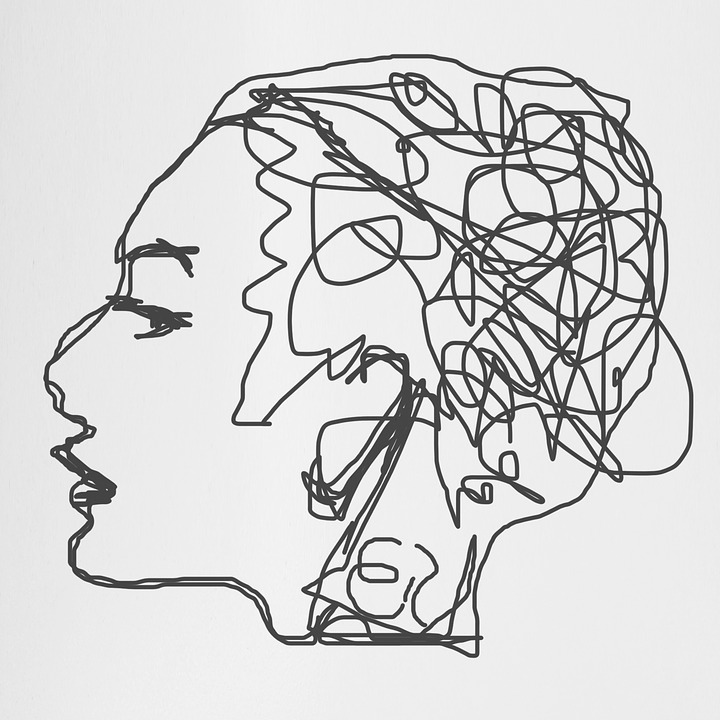

Astrid Homan (Work & Organizational Psychology)

Jaap Lancee (Clinical Psychology)
Astrid Homan’s (Work & Organizational Psychology) Question:
Dear Jaap,
We have recently heard a lot about depressive symptoms increasing in younger individuals, especially in the last years during the Covid-19 pandemic. Does this mean that more individuals experience insomnia and nightmares, and do you have some insights based on your own research on how to treat such insomnia and nightmares?
Astrid
Jaap Lancee’s (Clinical Psychology) Answer:
Dear Astrid,
Thank you for the interesting question. Insomnia (~10%) and nightmares (2-5%) are both prevalent disorders in the general population, even before Covid-19. There is indeed evidence that the pandemic is linked to a higher proportion of insomnia symptoms. Data show that this increase is most likely in the subthreshold insomnia symptoms and not so much in the moderate to severe insomnia (AlRasheed et al., 2022). The prevalence of nightmares is less well studied, and I could not find a study reporting on the difference in prevalence of nightmares before and during Covid-19. However, I think it is safe to assume that nightmare-frequency has also risen during the pandemic.
I think these high prevalence numbers have a major impact on society. Nightmares and insomnia have a negative impact on daily life, and both are related to various other psychiatric symptomatology. Furthermore, bad sleep seems to be associated with the development of other forms of psychopathology. For instance, people suffering from insomnia have a twofold chance of developing a major depression disorder.
The good news is that both insomnia and nightmares can effectively be treated. The treatment of choice for insomnia is cognitive-behavioral therapy. In this treatment the most effective element is probably the sleep restriction procedure. In sleep restriction bedtime is restricted in order to increase the homeostatic sleep drive. Consequently people start to sleep a higher proportion of their time in bed. If this proportion is high enough the bedtimes can be slowly expanded again. For nightmares the treatment of choice is Imagery Rehearsal Therapy. In this treatment a new, more positive ending is invented and this new ending is imagined during the day. Both treatment formats are effective and relatively easily applied. Ideally al psychologists would ask patients about their possible sleep problems and apply these techniques.
Jaap
Jaap Lancee’s question is for Maria Maric (Developmental Psychology):
Dear Marija
A couple of years ago we published a case series together on the effects of sleep treatment on depression. I must admit this was the first case series I did but I thought it provided very interesting data. I really liked your enthusiasm about the single-case experimental designs. Could you explain why these designs are so helpful in investigating treatment effects? Additionally could you explain what the newest developments in this area are?
Jaap
References
-
AlRasheed, M.M., Fekih-Romdhane, F., Jahrami, H., Pires, G.N., Saif, Z., Alenezi, A.F., Humood, A., (…), Vitiello, M.V. (2022). The prevalence and severity of insomnia symptoms during COVID-19: A global systematic review and individual participant data meta-analysis, Sleep Medicine, 100, 7-23.

ASTRID HOMAN (WORK & ORGANIZATIONAL PSYCHOLOGY)
ASTRID HOMAN’S (WORK & Organizational PSYCHOLOGY) QUESTION:
Dear Jaap,
We have recently heard a lot about depressive symptoms increasing in younger individuals, especially in the last years during the Covid-19 pandemic. Does this mean that more individuals experience insomnia and nightmares, and do you have some insights based on your own research on how to treat such insomnia and nightmares?
Astrid

JAAP LANCEE (CLINICAL PSYCHOLOGY)
Jaap Lancee’s (Clinical Psychology) Answer:
Dear Astrid,
Thank you for the interesting question. Insomnia (~10%) and nightmares (2-5%) are both prevalent disorders in the general population, even before Covid-19. There is indeed evidence that the pandemic is linked to a higher proportion of insomnia symptoms. Data show that this increase is most likely in the subthreshold insomnia symptoms and not so much in the moderate to severe insomnia (AlRasheed et al., 2022). The prevalence of nightmares is less well studied, and I could not find a study reporting on the difference in prevalence of nightmares before and during Covid-19. However, I think it is safe to assume that nightmare-frequency has also risen during the pandemic.
I think these high prevalence numbers have a major impact on society. Nightmares and insomnia have a negative impact on daily life, and both are related to various other psychiatric symptomatology. Furthermore, bad sleep seems to be associated with the development of other forms of psychopathology. For instance, people suffering from insomnia have a twofold chance of developing a major depression disorder.
The good news is that both insomnia and nightmares can effectively be treated. The treatment of choice for insomnia is cognitive-behavioral therapy. In this treatment the most effective element is probably the sleep restriction procedure. In sleep restriction bedtime is restricted in order to increase the homeostatic sleep drive. Consequently people start to sleep a higher proportion of their time in bed. If this proportion is high enough the bedtimes can be slowly expanded again. For nightmares the treatment of choice is Imagery Rehearsal Therapy. In this treatment a new, more positive ending is invented and this new ending is imagined during the day. Both treatment formats are effective and relatively easily applied. Ideally al psychologists would ask patients about their possible sleep problems and apply these techniques.
Best Regards,
Jaap
Jaap Lancee’s question is for Maria Maric (Developmental Psychology):
Dear Marija
A couple of years ago we published a case series together on the effects of sleep treatment on depression. I must admit this was the first case series I did but I thought it provided very interesting data. I really liked your enthusiasm about the single-case experimental designs. Could you explain why these designs are so helpful in investigating treatment effects? Additionally could you explain what the newest developments in this area are?
Best regards,
Jaap
References
-
AlRasheed, M.M., Fekih-Romdhane, F., Jahrami, H., Pires, G.N., Saif, Z., Alenezi, A.F., Humood, A., (…), Vitiello, M.V. (2022). The prevalence and severity of insomnia symptoms during COVID-19: A global systematic review and individual participant data meta-analysis, Sleep Medicine, 100, 7-23.


